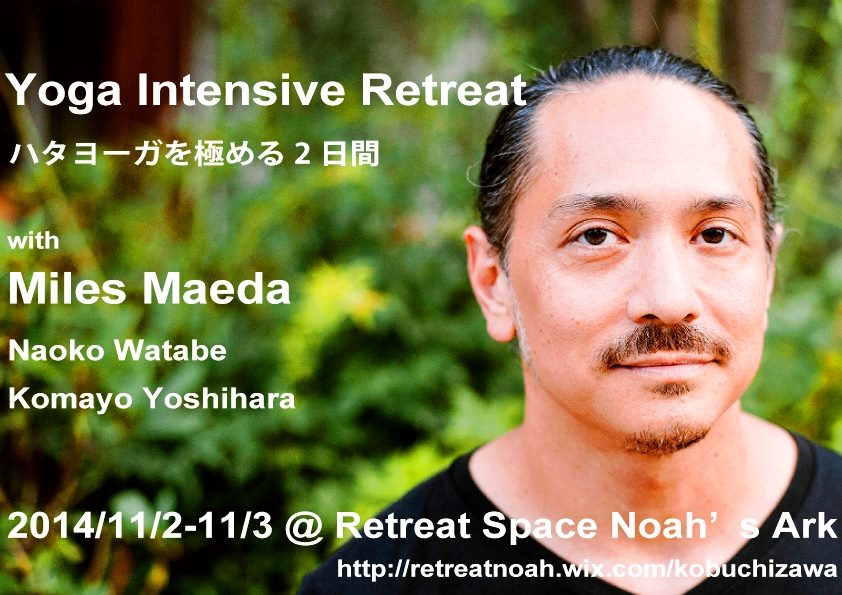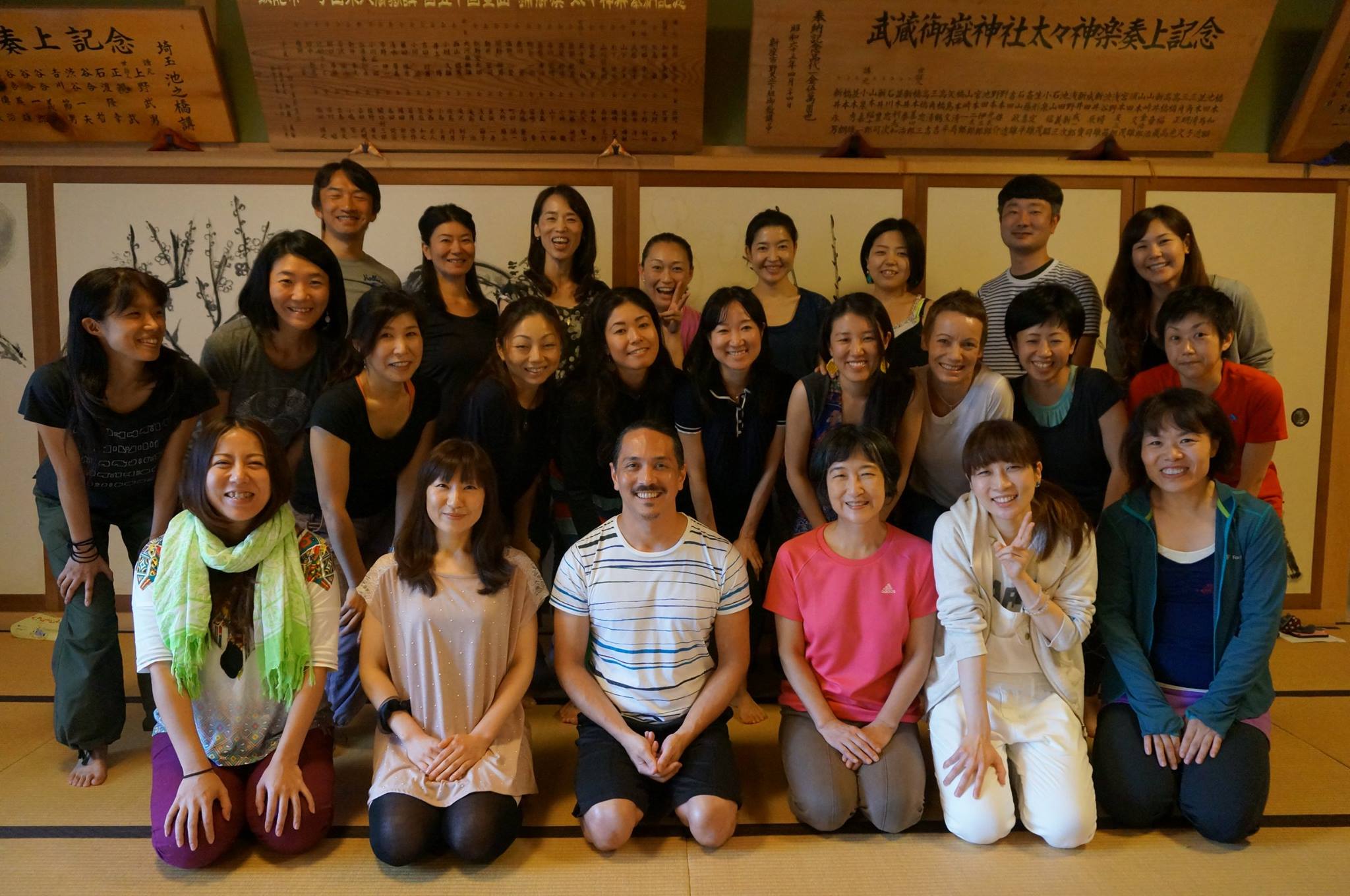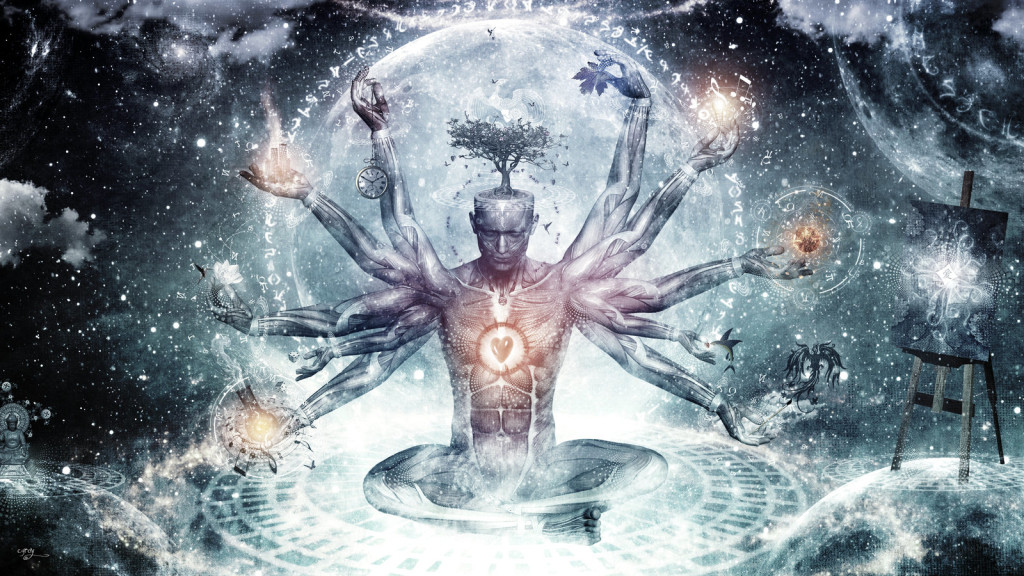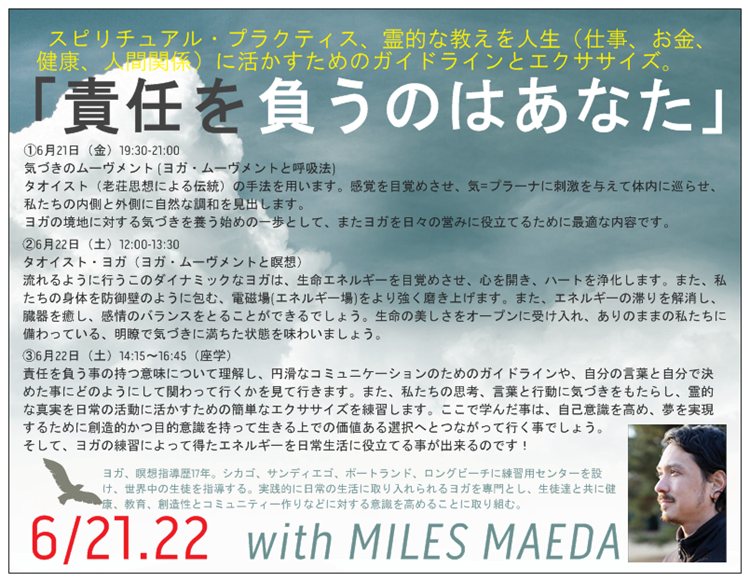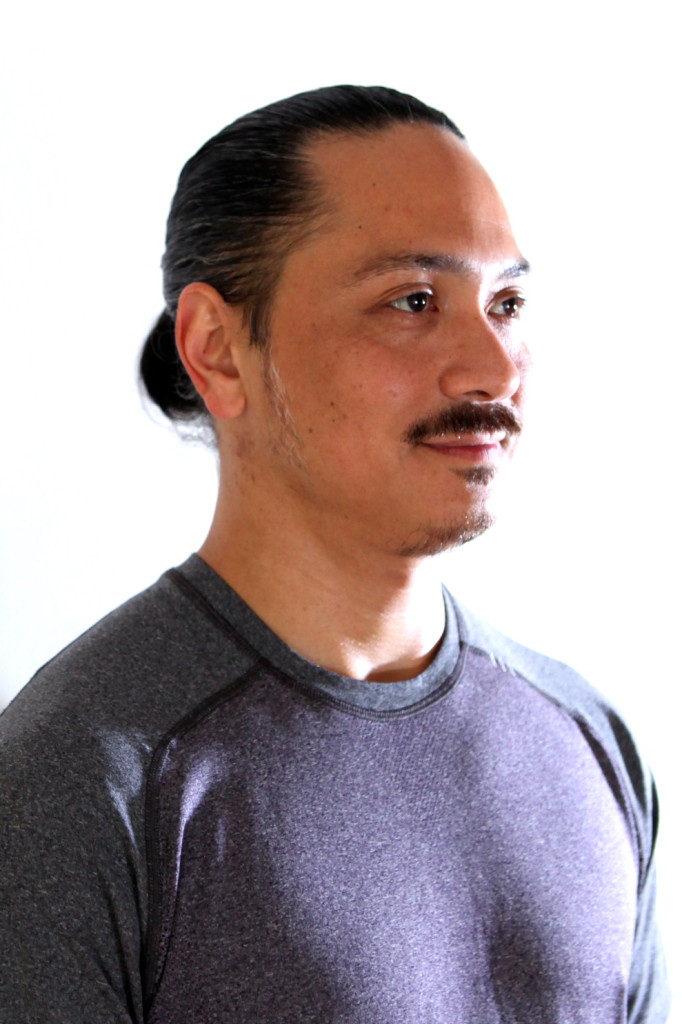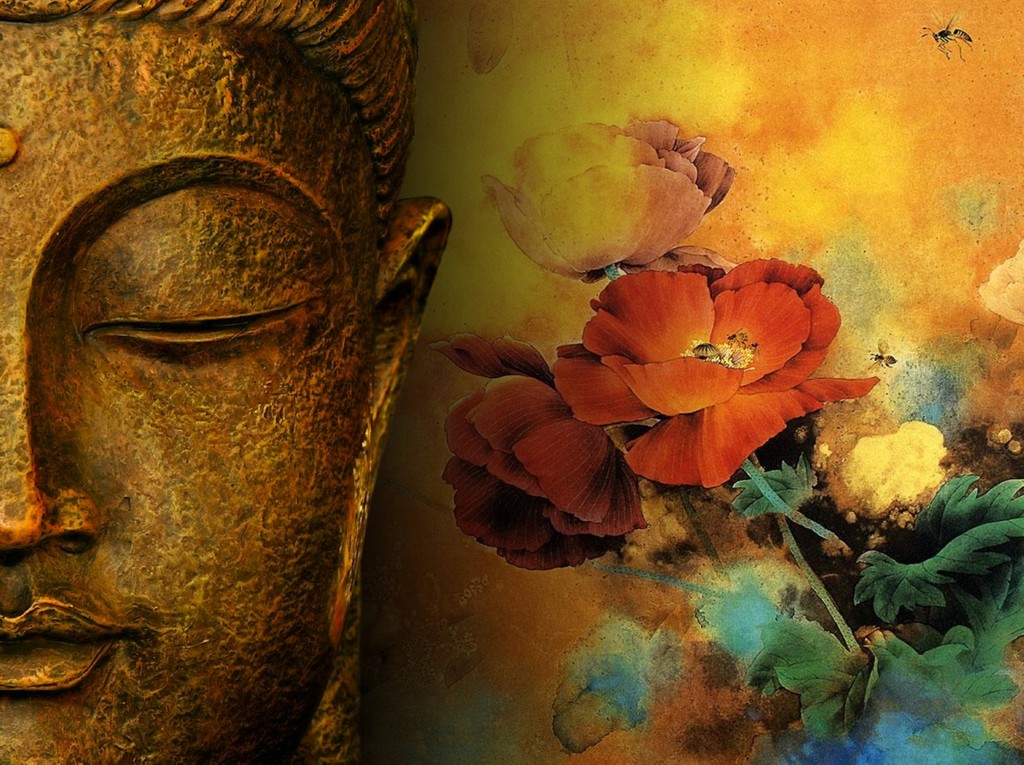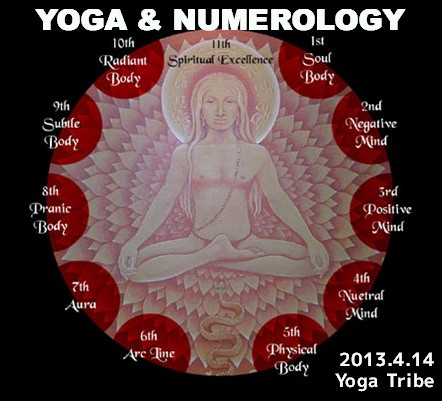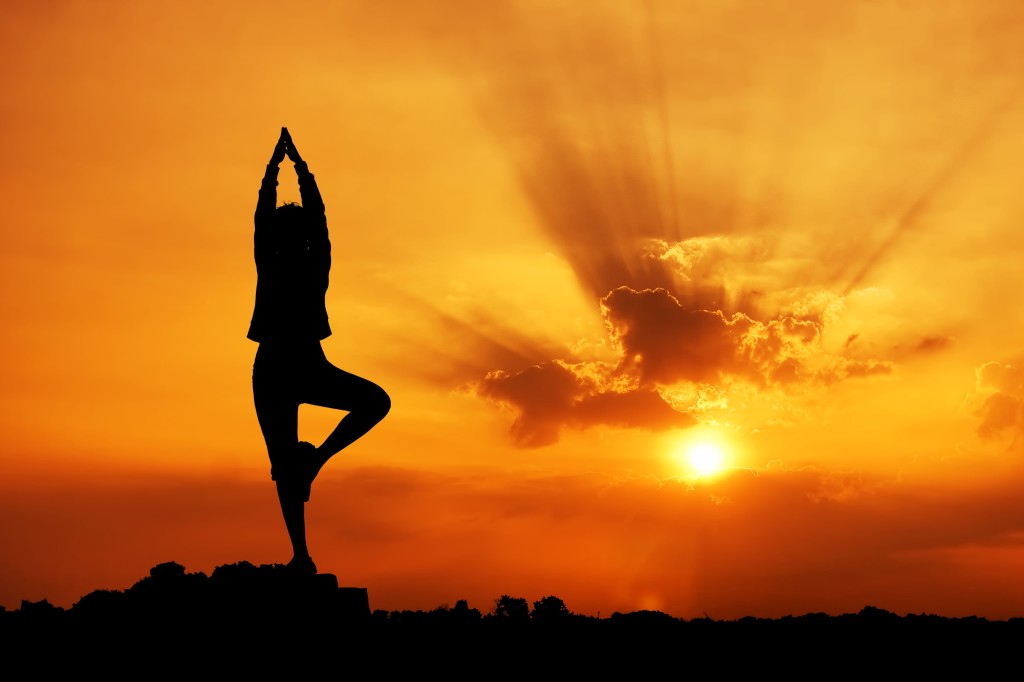
New Light on Yoga
新「ハタヨガの真髄」
From loincloths to leotards, yoga has come a long way in 5,000 years. But is yoga as we know it really that old?
By Anne Cushman
腰布からレオタードへ、ヨガは5000年の歴史を歩んできました。でも、私たちが知っているヨガとは本当にそれほど古いものなのでしょうか?
A couple of years ago, when I had just returned to Yoga Journal after six months of traveling to ashrams and holy sites in India, I got a call from a writer for Mirabella magazine who was researching a fashion spread on exercise wear.
数年前、半年に渡るインドの聖地をめぐる旅を終えて「ヨガ・ジャーナル」に戻ったばかりの私は、「ミラベラ」誌のライターから1本の電話を受けました。彼女はエクササイズ・ウェアにおけるファッション性の広がりについてリサーチ中でした。
“I was wondering” she said, “what is the traditional outfit for doing yoga?”
「教えて欲しいのだけど」彼女はたずねました。「伝統的なヨガ・ウェアってどんなものなの?」
I thought of the naked yogis I had seen on the banks of the Ganges, their skin smeared with ashes from the cremation pyre to remind themselves of the body’s impermanence, their foreheads painted with the insignia of Shiva, the god of destruction. I couldn’t resist.
私はガンジスのほとりで出逢った裸のヨギ達を思い出しました。肉体が無常である事を忘れないために、火葬の灰を体中に塗り、額に破壊神シヴァのしるしを付けている彼らの事を話さずにはいられなくなってしまったのです。
“Well, traditionally, you would carry a trident and cover your body with the ashes of the dead,” I told her.
そして「そうね、伝統的には三叉の矛を持って死人を焼いた灰を体中に塗るの。」と彼女に言いました。
There was a long pause, during which I could practically hear her thinking, “This will never fly with the Beauty Editor.” Finally I took pity on her. “But alternatively,” I said, “a leotard and tights will work just fine.”
長い沈黙。私には彼女の心の声が「これは”ビューティ・エディター”のネタには無理だわ」と言うのが聞こえるようでした。結局私は気の毒に思って、「まああるいは、レオタードとタイツというのでも良いと思うわ」と言ったのですが。
“Tradition” is a word that gets tossed around a lot in yoga circles. We’re taught the “traditional” way to do poses: “The feet are hip-width apart in Downward-Facing Dog.” We’re taught the “traditional” way to string them together: “Headstand comes before Shoulderstand.” We take comfort in believing that we’re the heirs to an ancient treasury of knowledge, the latest bead in a mala that stretches back, unbroken, for generations. In rootless, amnesiac American culture—where “traditions,” like lipstick colors, change every season—the very antiquity of yoga gives it instant cachet, as evidenced by the jackets of yoga videos advertising a “5,000-year-old exercise system.”
ヨガにおいて「伝統」という言葉にはいろいろな捉え方があるようです。私たちは「伝統的な」ポーズのとり方を教わります(「ダウンワード・フェイシング・ドッグの時は足を腰幅に開きましょう」)。ポーズの「伝統的な」つなぎ方についても教わります(「ショルダースタンドの前にヘッドスタンドを持ってきましょう」)。私たちは、いにしえの知識の宝庫を受け継ぐ者、幾世代にも渡って途切れる事無く連なって来たマーラーの一番端に連なる玉なのだと信じる事に安心感を覚えます。ルーツを持たない記憶喪失的なアメリカ文化(「伝統」すら口紅の色のように季節ごとに変わります)において、ヨガの歴史が持つ古さは即座に受け入れられます。これはヨガのビデオジャケットに書いてある「5000年の歴史を持つエクササイズ・システム」といった宣伝文句からも明らかです。
Modern yoga masters present us with a whole galaxy of different poses, or asanas—Iyengar’s Light on Yoga (Schocken Books, 1995), the modern illustrated Bible of asana practice, depicts more than 200. And most new yoga students accept it as an article of faith that these poses have been practiced—in more or less this form—for centuries. As we fold into Downward-Facing Dog, arch into Upward Bow, or spiral into a spinal twist named for an ancient sage, we believe that we are molding our bodies into archetypal shapes whose precise effect on the body, mind, and nervous system has been charted over generations of practice.
現代ヨガの師たちは、様々なポーズ、アーサナの集合体を私たちに示してくれます。例えば、アイアンガーの著書「ハタヨガの真髄」は、200以上のアーサナを写真で紹介している現代のアーサナ練習におけるバイブルと言えるでしょう。そしてヨガを始めたばかりの生徒たちはこれを信条ででもあるかのように捉えます。これらのポーズは(多かれ少なかれこの形で)何世紀もの間練習されてきたのだと。ダウンワード・フェイシング・ドッグの形に体を折り曲げながら、上向きの弓のポーズへと背中を反らせながら、いにしえの賢者の名前がついたねじりのポーズで背骨をねじりながら、私たちは何世代にもわたる練習の中で体と心、神経系への効果が示されて来たそのポーズの原型に体を当てはめていると信じます。
In its most extreme form, homage to tradition can create a breed of “yoga fundamentalists”—yogis who believe the asanas were channeled directly from God and passed down through their particular lineage. Any deviation from their version of gospel will result in excommunication.
極端な例を挙げれば、伝統へのオマージュが「ヨガ原理主義者」を生み出す事もあり得ます。アーサナは神からもたらされたものであり、特別な系譜をたどり受け継がれて来たのだと信じるヨギ達です。彼らの道を外れる者は破門されてしまいます。
Tradition? Says Who?
伝統?誰がそんな事を言ったのでしょう?
But what really is “traditional” hatha yoga? You don’t have to look much further than Mirabella (or Yoga Journal) to realize that yoga in the West has already changed form. Some of these changes are superficial: We don’t practice in loincloths in solitary mountain caves, but on plastic mats in crowded, mirror-walled gyms wearing outfits that would get us lynched in Mother India. Other changes are more significant: For example, before the twentieth century, it was practically unheard of for women to do hatha yoga.
ハタ・ヨガにおける「伝統」とは一体何でしょうか。「ミラベラ」誌(あるいは「ヨガ・ジャーナル」)を見てみるだけでも、西欧に入ったヨガは既にその形を変えている事に気づくでしょう。変化のいくつかは表面的なものです。山中の洞窟に独りで籠り、腰布姿で練習するかわりに、鏡張りの混み合ったジムにヨガ・マットを敷いて、母なるインドの地ではリンチに遭いかねないようなウェアを着て練習します。他の変化はもっとはっきりしたものです。例えば20世紀以前には、女性がハタ・ヨガを行うなどという事は考えられませんでした。
According to yoga scholars, even the yoga postures—the basic vocabulary of modern hatha yoga—have evolved and proliferated over time. In fact, only a handful of these now-familiar postures are described in the ancient texts. Patanjali’s second-century Yoga Sutra mentions no poses at all, other than the seated meditation posture. (The Sanskrit word “asana” literally means “seat.”) The fourteenth-century Hatha Yoga Pradipika—the ultimate classical hatha yoga manual—lists only 15 asanas (most of them variations of the cross-legged sitting position), for which it gives very sketchy instructions. The seventeenth-century Gheranda Samhita, another such manual, lists only 32. Conspicuously missing are the standing poses—Triangle, Warrior, etc.—and Sun Salutations that form the backbone of most contemporary systems.
ヨガの研究者たちによれば、ヨガのポーズ(現代ハタ・ヨガの基礎的語彙)でさえ、時とともに進化し、増加してきたのだそうです。事実、私たちに馴染みのあるポーズの中で、古典に記されているものはほんの一握りに過ぎません。2世紀にパタンジャリが著した「ヨーガ・スートラ」には、瞑想の時の座法以外にポーズの事は記されていません。(サンスクリット語である「アーサナ」には文字通り「座」という意味があります。)14世紀に著された「ハタ・ヨーガ・プラディーピカー」(古典ハタ・ヨガの根本教典)には、15のアーサナしか記されておらず(そしてそのほとんどが脚を組んだ座位のバリエーションですが)、説明も大ざっぱなものです。17世紀の「ゲーランダ・サンヒター」も同様の教本ですが、アーサナの数はたったの32です。中でも顕著なのは、三角のポーズや戦士のポーズといった立位のポーズや、現代ヨガの諸流派において重要な太陽礼拝が抜けている事です。
Other venerable texts on hatha yoga eschew mention of asanas altogether, focusing instead on the subtle energy systems and chakras that the poses both reflect and influence. The modern emphases on precision of alignment, physical fitness, and therapeutic effects are purely twentieth-century innovations.
その他の由緒あるハタ・ヨガの文献も、アーサナについては述べられず、微細なエネルギー・システムやチャクラに重点が置かれています。これらはヨガのポーズによって作用し、影響を与え得るものです。現代ヨガでは、アライメントの正確さ、身体の健康や癒し効果が重要視されますが、これは20世紀に発展した考え方なのです。
Rumors abound about lost, ancient texts that describe asanas in detail—the Ashtanga vinyasa system taught by Pattabhi Jois, for example, is allegedly based on a palm-leaf manuscript called the Yoga Korunta that Jois’s teacher, renowned yoga master T. Krishnamacharya, unearthed in a Calcutta library. But this manuscript has reportedly been eaten by ants; not even a copy of it exists. In fact, there’s no objective evidence that such a document ever existed. In all his voluminous writings on yoga—which contain extensive bibliographies of all the texts that have influenced his work—Krishnamacharya himself never mentions or quotes from it. Many of Krishnamacharya’s other teachings are based on an ancient text called the Yoga Rahasya—but this text too had been lost for centuries, until it was dictated to Krishnamacharya in a trance by the ghost of an ancestor who had been dead nearly a thousand years (a method of textual reclamation that will satisfy devotees, but not scholars).
アーサナについて詳説した、失われた文献についての噂も飛び交っています。例えば、パタビ・ジョイスの教えであるアシュタンガ・ヴィンヤサ・システムは、ジョイスの師である、高名なT.クリシュナマチャリアがカルカッタの図書館で発見した、ヨガ・コルンタという椰子の葉に書かれた文献が元になっていると言われています。しかし、伝えられる所によれば、これは蟻に喰われてしまい、写本すら残っていないとの事。実際、そのような文献が存在した事を示す物的証拠は何もありません。その膨大なヨガに関する著作の中でも(これには、彼が影響を受けた広範囲に渡る文献の目録も含まれますが)クリシュナマチャリア自身はヨガ・コルンタに関する言及、引用などを一切していません。クリシュナマチャリアの他の教えの多くは、ヨガ・ラハーシャという古い教本が元になっています。しかしこの教本もまた、1000年近くも前に亡くなった祖先の亡霊がトランス状態のクリシュナマチャリアに口述で伝えるまでは、何世紀も失われていたものなのです(原文がこのようにして再生したいきさつは、彼に心酔する者たちを喜ばせましたが、学者たちはそうではありませんでした)。
In general, the textual documentation of hatha yoga is scanty and obscure, and delving into its murky history can be as frustrating as trying to snorkel in the mud-brown Ganges. Given the paucity of historical evidence, yoga students are left to take the antiquity of the asanas on faith, like fundamentalist Christians who believe that the Earth was created in seven days.
ハタ・ヨガについて書かれた文献というものは概してわずかで、曖昧なものです。そしてこのはっきりしない歴史について詳細に調べようとする事は、泥で濁ったガンジス川でシュノーケリングをするようにもどかしいものかもしれません。歴史的事実が不足しているために、ヨガを学ぶ生徒たちはアーサナの古さをただ信じる事しかできません。これはまるで、地球は7日間で作られたと信じるキリスト教原理主義者のようです。
Not only is there no clear textual history, but there’s not even a clear teacher-student lineage that indicates systematized oral teachings handed down over generations. In Zen Buddhism, for example, students can chant a lineage of teachers stretching back for centuries, with each Zen master certified by the one preceding. No such unbroken chain of transmission exists in hatha yoga. For generations, hatha yoga was a rather obscure and occult corner of the yoga realm, viewed with disdain by mainstream practitioners, kept alive by a smattering of isolated ascetics in caves and Hindu maths (monasteries). It appears to have existed for centuries in seed form, lying dormant and surfacing again and again. In the twentieth century, it had almost died out in India. According to his biography, Krishnamacharya had to go all the way to Tibet to find a living master.
はっきりとした歴史的文献が無いだけでなく、体系的に口述で何世代も受け継がれて来た師弟の系統を明確に示すものも無いのです。例えば禅宗では、弟子達は何世紀にもさかのぼる師の系統を詠唱します。そして、禅師は誰でもその先達から教えを授かっているのです。ハタ・ヨガには、このようにしっかりとした伝承はありません。何世代にも渡り、ハタ・ヨガはむしろヨガの領域においてはぼんやりとした神秘的な一角に位置し、主流派の実践者達からは蔑みの目を向けられていました。洞窟で独り修行をする少数の苦行者やヒンドゥー教の僧院によって、かろうじて生き延びて来たのです。それはまるで何世紀もの間、地中に眠っていた種の状態で、繰り返し地表に表れてくるもののようでした。そして20世紀には、インドではハタ・ヨガはほとんど忘れ去られていました。クリシュナマチャリアの自伝によれば、彼は存命の師を見つけるためにチベットまで赴かなければならなかったそうです。
Given this lack of a clear historical lineage, how do we know what is “traditional” in hatha yoga? Where did our modern proliferation of poses and practices come from? Are they a twentieth-century invention? Or have they been handed down intact, from generation to generation, as part of an oral tradition that never made it into print?
歴史的な系統もはっきりしない中で、「伝統的な」ハタ・ヨガを知る事などできるのでしょうか?現代に増え続けて来たポーズやプラクティスの数々はどこから来たものなのでしょう。20世紀になって創り出されたものなのでしょうか。それとも、世代から世代へと、損なわれる事なく、口述の伝統に則って書き残される事なく受け継がれて来たのでしょうか?
The Mysore Palace
マイソール宮殿
I found myself pondering these questions afresh recently after I came across a dense little book called The Yoga Tradition of the Mysore Palace (South Asia Books, 1996) by a Sanskrit scholar and hatha yoga student named Norman Sjoman. The book presents the first English translation of a yoga manual from the 1800s, which includes instructions for and illustrations of 122 postures—making it by far the most elaborate text on asanas in existence before the twentieth century. Entitled the Sritattvanidhi (pronounced “shree-tot-van-EE-dee”), the exquisitely illustrated manual was written by a prince in the Mysore Palace—a member of the same royal family that, a century later, would become the patron of yoga master Krishnamacharya and his world-famous students, B.K.S. Iyengar and Pattabhi Jois.
サンスクリット語の研究者であり、ハタ・ヨガの練習生でもあるノーマン・ショーマンによる「マイソール宮殿におけるヨガの伝統」(1996年、サウス・アジア・ブックス)という小さくも難解な本を最近見つけた事で、私は改めてこの問いについて考えている自分に気づきました。この本には、1800年代に初めて英訳された、ヨガ教本の事が書かれています。122のポーズが図解付きで説明されたこの本は、現存する20世紀以前のアーサナ本としては最も詳細なものでしょう。「シュリートットヴァニーディ」と題された、見事な図解入りのこの教本は、マイソール宮殿の王子によって書かれました。そして彼は、一世紀のちにクリシュナマチャリア師と、その世界的に有名な弟子達であるB.K.S. アイアンガー、パタビ・ジョイスのパトロンとなった王族と同じ系統の人物でした。
Sjoman first unearthed the Sritattvanidhi in the mid-1980s, as he was doing research in the private library of the Maharaja of Mysore. Dating from the early 1800s—the height of Mysore’s fame as a center of Indian arts, spirituality, and culture—the Sritattvanidhi was a compendium of classical information about a wide variety of subjects: deities, music, meditation, games, yoga, and natural history. It was compiled by Mummadi Krishnaraja Wodeyar, a renowned patron of education and the arts. Installed as a puppet Maharaja at age 5 by the British colonialists—and deposed by them for incompetence at the age of 36—Mummadi Krishnaraja Wodeyar devoted the rest of his life to studying and recording the classical wisdom of India.
ショーマンが「シュリートットヴァニーディ」を初めて発見したのは、1980年代半ば、マイソールのマハラジャの書斎で調査をしていた時の事でした。1800年代初頭から、マイソールはインドの芸術、スピリチュアリティ、文化の中心としてその名を馳せていました。そして、「シュリートットヴァニーディ」は多岐に渡るテーマ(神々、音楽、瞑想、ゲーム、ヨガ、自然史など)の抄録でした。編纂者はムマーディ・クリシュナラージャ・ウォデヴァールという、教育と芸術の分野では名を知られたパトロンでした。5歳の時に英国の植民地主義者達によって傀儡のマハラジャに祭り上げられ、36歳の時に彼らによってその地位を剥奪されたのち、ムマーディ・クリシュナラージャ・ウォデヴァールはその人生をインドの伝統的な叡智の研究と記録に捧げました。
At the time Sjoman discovered the manuscript, he had spent almost 20 years studying Sanskrit and Indian philosophy with pundits in Pune and Mysore. But his academic interests were balanced by years of study with hatha yoga masters Iyengar and Jois. As a yoga student, Sjoman was most intrigued by the section of the manuscript dealing with hatha yoga.
ショーマンがこの文献を発見した頃、彼は既にプーネとマイソールの識者たちと20年近く、サンスクリット語とインド哲学を学んでいました。しかしながら、彼の学術的関心は、アイアンガー、そしてジョイス両師とハタ・ヨガを学ぶことによって偏ることなくバランスを保っていました。そしてこの文献の中で、ヨガの練習生として彼が最も関心を引かれたのは、ハタ・ヨガについて書かれた部分でした。
Sjoman knew that the Mysore Palace had long been a hub of yoga: Two of the most popular styles of yoga today—Iyengar and Ashtanga, whose precision and athleticism have profoundly influenced all contemporary yoga—have their roots there. From around 1930 until the late 1940s, the Maharaja of Mysore sponsored a yoga school in the palace, run by Krishnamacharya—and the young Iyengar and Jois were both among his students. The Maharaja funded Krishnamacharya and his yoga protégés to travel all over India giving yoga demonstrations, thereby encouraging an enormous popular revival of yoga. It was the Maharaja who paid for the now well-known 1930s film of Iyengar and Jois as teenagers demonstrating asanas—the earliest footage of yogis in action.
ショーマンはマイソール宮殿が長らくヨガの中心地であった事を知っていました。今日最もポピュラーなスタイルとして知られているアイアンガー・ヨガとアシュタンガ・ヨガはその正確さと運動量においてあらゆる現代ヨガに深い影響を与えましたが、この2つのスタイルのルーツはマイソールにあるのです。1930年頃から1940年代後半まで、マイソールのマハラジャは、クリシュナマチャリアが運営していた宮殿内のヨガ学校を援助していました。そしてこの学校の生徒に、若き日のアイアンガーとジョイスがいたのです。マハラジャは、クリシュナマチャリアと彼の弟子達がインド各地でヨガの実演を行うための資金援助をし、大衆に広くヨガが再び受け入れられるよう奨励しました。10代のアイアンガーとジョイスがアーサナの実演を行っている1930年代に撮られた映像は最も古いヨギの動画として今日では良く知られていますが、この撮影費用を出したのもマハラジャでした。
But as the Sritattvanidhi proves, the Mysore royal family’s enthusiasm for yoga went back at least a century earlier. The Sritattvanidhi includes instructions for 122 yoga poses, illustrated by stylized drawings of an Indian man in a topknot and loincloth. Most of these poses—which include handstands, backbends, foot-behind-the-head poses, Lotus variations, and rope exercises—are familiar to modern practitioners (although most of the Sanskrit names are different from the ones they are known by today). But they are far more elaborate than anything depicted in other pre-twentieth-century texts. The Sritattvanidhi, as Norman Sjoman instantly realized, was a missing link in the fragmented history of hatha yoga.
しかし、シュリートットヴァニーディが明らかにしている通り、マイソール王家のヨガに対する情熱は少なくともこれより1世紀昔にさかのぼります。シュリートットヴァニーディには、122のヨガ・ポーズが、髷を結った腰布姿のインド人男性の絵で紹介されています。ポーズのほとんどは、(ハンドスタンドやバックベンド、足を頭の後ろへ掛けるポーズや、蓮華坐のバリエーション、ロープを使ったエクササイズなど)現代の実践者にも親しみのあるものばかりでしょう(サンスクリット語の名前は今日知られているものとは異なりますが)。しかしながら、20世紀以前の文献としては、他のものよりもはるかに詳細に描かれています。シュリートットヴァニーディは、ノーマン・ショーマンが即座に認めた通り、分裂したハタ・ヨガの歴史における失われた一片だったのでしょう。
“This is the first textual evidence we have of a flourishing, well-developed asana system existing before the twentieth century—and in academic systems, textual evidence is what counts,” says Sjoman. “The manuscript points to tremendous yogic activity going on in that time period—and having that much textual documentation indicates a practice tradition at least 50 to 100 years older.”
「これは、20世紀以前に良く練られたアーサナ体系が発展していた事を証明してくれる書物です。学問の世界では、文献による証拠が残っている事は重要です。」とショーマンは言います。「ここに書かれている事は、当時ヨガ的な活動が大変盛んであった事を示しています。そして、これだけの文献として残っているという事は、このプラクティスの伝統が少なくとも50年から100年の歴史を持っていた事を示唆しています。」
Potpourri Lineage
雑多な系統
Unlike earlier texts such as the Hatha Yoga Pradipika, the Sritattvanidhi doesn’t focus on the meditative or philosophical aspects of yoga; it doesn’t chart the nadis and chakras (the channels and hubs of subtle energy); it doesn’t teach pranayama (breathing exercises) or bandhas (energy locks). It’s the first known yogic text devoted entirely to asana practice—a prototypical “yoga workout.”
ハタ・ヨーガ・プラディーピカーの様な初期の文献とは異なり、シュリートットヴァニーディはヨガの瞑想的な側面や哲学的なそれには触れていません。ナーディやチャクラ(微細なエネルギーの通り道や中枢)の図表は載っていませんし、プラナヤマ(呼吸法)やバンダ(エネルギーをロックする事)についても説いていません。これはアーサナのプラクティスのみを詳説した最初の文献、いわば「ヨガ・エクササイズの練習」の原型として知られる書物です。
Hatha yoga students may find this text of interest simply as a novelty—a relic of a “yoga boom” of two centuries ago. (Future generations may pore with equal fascination over “Buns of Steel” yoga videos.) But buried in Sjoman’s somewhat abstruse commentary are some claims that shed new light on the history of hatha yoga—and, in the process, may call into question some cherished myths.
ハタ・ヨガの練習生は、この興味深い文献を単に珍しいもの、2世紀も前の「ヨガ・ブーム」の遺物と見るかもしれません。(後世の人々は「バンズ・オブ・スチール」のヨガ・ビデオに同様の魅力を覚えるかもしれません。)しかし、ショーマンのいくらか難解な解説の裏にあるのは、ハタ・ヨガの歴史に新たな光をあてる主張です。そしてこれはいつしか、長く守られて来た神話に疑問を投げ掛けるのです。
According to Sjoman, the Sritattvanidhi—or the broader yoga tradition it reflects—appears to be one of the sources for the yoga techniques taught by Krishnamacharya and passed on by Iyengar and Jois. In fact, the manuscript is listed as a resource in the bibliography of Krishnamacharya’s very first book on yoga, which was published—under the patronage of the Maharaja of Mysore—in the early 1930s. The Sritattvanidhi depicts dozens of poses that are depicted in Light on Yoga and practiced as part of the Ashtanga vinyasa series, but that don’t show up in any older texts.
ショーマンによると、シュリートットヴァニーディ(あるいはこの本によって示される、より幅広いヨガの伝統)は恐らく、クリシュナマチャリアがアイアンガーとジョイスに説いたヨガ技法のソースとなる書物だろうという事です。実際、この本はクリシュナマチャリアのヨガに関する著作で、1930年代初頭にマイソールのマハラジャの援助によって出版された本の文献目録にもリストアップされています。シュリートットヴァニーディに描かれている何十ものポーズは「ハタヨガの真髄」にも載っており、アシュタンガ・ヴィンヤサ・シリーズでも練習されているものですが、他のもっと古い文献にはこれらのポーズは登場しません。
But while the Sritattvanidhi extends the written history of the asanas a hundred years further back than has previously been documented, it does not support the popular myth of a monolithic, unchanging tradition of yoga poses. Rather, Sjoman says that the yoga section of the Sritattvanidhi is itself clearly a compilation, drawing on techniques from a wide range of disparate traditions. In addition to variations on poses from earlier yogic texts, it includes such things as the rope exercises used by Indian wrestlers and the danda push-ups developed at the vyayamasalas, the indigenous Indian gymnasiums. (In the twentieth century, these push-ups begin to show up as Chaturanga Dandasana, part of the Sun Salutation). In the Sritattvanidhi, these physical techniques are for the first time given yogic names and symbolism and incorporated into the body of yogic knowledge. The text reflects a practice tradition that is dynamic, creative, and syncretistic, rather than fixed and static. It does not limit itself to the asana systems described in more ancient texts: Instead, it builds on them.
しかしながら、シュリートットヴァニーディの存在が、アーサナに関する書物の歴史を、これまでに考えられて来たよりも100年過去へ引き延ばしたからといって、ヨガのポーズについての変わらぬ伝統という一枚岩の神話を支持する事にはならないでしょう。むしろショーマンは、シュリートットヴァニーディのヨガに関する項目は明らかに、様々な伝統による技法を編集して描いたものであるとしています。初期のヨガに関する文献に記されている色々なポーズに加え、インドのレスラー達が用いたロープを使ったエクササイズ、ヴィヤヤマサーラ(インド固有の屋内競技場)で発展したダンダ・プッシュアップなどなどが含まれています。(このプッシュアップは20世紀になって、太陽礼拝の一部であるチャトゥランガ・ダンダーサナとして見られるようになります)シュリートットヴァニーディにおいて、これらの肉体的な技法にヨガ的な名前と象徴的な体系が与えられ、ヨガ的な知識に吸収されたのです。この文献はプラクティスの伝統が固定的で変化の無いものではなく、より動的で創造的であり、様々な要素が混じり合って来たものだという事を表しています。これはもっと古い文献に記されているアーサナ体系の枠組みに限定されるのではなく、それを土台として成り立っているものなのです。
In turn, says Sjoman, Krishnamacharya drew on the Sritattvanidhi tradition and blended it with a number of other sources, as Sjoman discovered by reading the various books by Krishnamacharya in the Maharaja’s library. Krishnamacharya’s first writings, which cited the Sritattvanidhi as a source, also featured vinyasa (sequences of poses synchronized with the breath) that Krishnamacharya said he had learned from a yoga teacher in Tibet. Over time, these vinyasa were gradually systematized further—Krishnamacharya’s later writings more closely resemble the vinyasa forms taught by Pattabhi Jois. “Therefore it seems logical to assume that the form we find in the series of asanas with Pattabhi Jois was developed during Krishnamacharya’s period of teaching,” writes Sjoman. “It was not an inherited format.” To dedicated Ashtanga practitioners, this claim borders on the heretical.
同様に、ショーマンがマハラジャの書庫でクリシュナマチャリアの様々な著作を読んで分かった事は、彼もまたシュリートットヴァニーディの伝統に基づいて、これに他の要素を交えながら自身の本を書いたという事です。クリシュナマチャリアの最初の著作は、シュリートットヴァニーディをソースとして用い、彼がチベットのヨガ教師から学んだというヴィンヤサ(呼吸に合わせて一連のポーズを取るスタイル)について取り上げています。時とともに、これらヴィンヤサの形は徐々に体系化され、もっと後になってからのクリシュナマチャリアの本では、その形はパタビ・ジョイスが教えるヴィンヤサと良く似たものになっています。「したがって、パタビ・ジョイスのアーサナ・シリーズに見られる形は、クリシュナマチャリアがその教えの中で発展させたものと見なすのは理にかなっています」とショーマンは書いています。「これは継承されて来た形ではないのです。」
ひたむきなアシュタンガの実践者達にとって、これは異端の考えと取られるでしょう。
Along the way, claims Sjoman, Krishnamacharya also seems to have incorporated into the yogic canon specific techniques drawn from British gymnastics. In addition to being a patron of yoga, the Mysore royal family was a great patron of gymnastics. In the early 1900s, they hired a British gymnast to teach the young princes. When Krishnamacharya was brought to the palace to start a yoga school in the 1920s, his schoolroom was the former palace gymnastics hall, complete with wall ropes and other gymnastic aids, which Krishnamacharya used as yoga props. He was also given access to the Western gymnastics manual written by the Mysore Palace gymnasts. This manual—excerpted in Sjoman’s book—gives detailed instructions and illustrations for physical maneuvers that Sjoman argues quickly found their way into Krishnamacharya’s teachings, and passed on to Iyengar and Jois: for example, lolasana, the cross-legged jumpback that helps link together the vinyasa in the Ashtanga series, and Iyengar’s technique of walking the hands backward down a wall into a back arch.
ショーマンの主張によれば、さらに、クリシュナマチャリアは英国の体操からの特有な技法をヨガに取り入れたようだというのです。マイソール王家はヨガの擁護者であると共に、体操の大いなる庇護者でもありました。1900年代初頭、王家は英国人の体操講師を若き王子達のために雇いました。1920年代に、クリシュナマチャリアがヨガ学校を開くために宮殿へ召された時、教室として与えられた場所は、元々宮殿の体操用のホールでした。壁にはロープがしつらえられ、体操用具も揃っており、これらをクリシュナマチャリアはヨガのプロップスとして用いました。また、マイソール宮殿にいた体操選手達が書いた、西欧の体操技法に関する教本を閲覧する事も出来ました。この教本には(ショーマンの本にも引用されていますが)、肉体的な技法の詳細な説明と図が記されており、ショーマンはこれを見れば、即座にクリシュナマチャリアの教えにつながるものがあると主張します。そしてこれがアイアンガーとジョイスに受け継がれたのだと。例えばロラーサナ、脚をクロスしてジャンプバックする、アシュタンガ・シリーズのヴィンヤサでつなぎとなるポーズや、アイアンガーに見られる、手で壁を床に向かってつたいながら後屈に入る手法などです。
Modern hatha yoga draws on British gymnastics? The yoga of Iyengar, Pattabhi Jois, and Krishnamacharya influenced by a potpourri that included Indian wrestlers? These are claims guaranteed to send a frisson of horror up the limber spine of any yoga fundamentalist. But according to Sjoman, his book is meant not to debunk yoga—but to pay tribute to it as a dynamic, growing, and ever-changing art.
現代ヨガが英国の体操の引用?アイアンガーやパタビ・ジョイス、クリシュナマチャリアのヨガがインドのレスラーを含む様々な寄せ集めに影響を受けていると?この主張にヨガ原理主義者たちの柔軟な背骨が不快感にうち震える事は間違いないでしょう。しかし、ショーマンによれば、彼の本はヨガの偽りを暴くために書かれたのではなく、常に動き、成長し変化し続けるヨガという技法をたたえるものだという事です。
Krishnamacharya’s genius, says Sjoman, is that he was able to meld these different practices in the fire of yoga philosophy. “All those things are Indianized, brought into the purview of the yoga system,” Sjoman says. After all, he points out, Patanjali’s only requirement for asana was that it be “steady and comfortable.” “This is a functional definition of asana,” he says. “What makes something yoga is not what is done, but how it is done.”
「クリシュナマチャリアが天才的だったのは、」とショーマンは言います。「これらの異なるプラクティスをヨガ哲学の火によって一つに融合し得た事です。これら全ての要素はインド化されて、ヨガという体系の中に収められたのです。」彼は指摘します。「つまるところ、パタンジャリがアーサナに必要としたのは、”安定して快適である“という事だけでした。これは機能的なアーサナの定義です。ヨガであるためには、何を成すかではなく、どのように成すかという事が重要なのです。」
This realization, he says, can be liberating, paving the way for a greater appreciation of the role of individual intuition and creativity in the development of yoga. “Krishnamacharya was a great innovator and experimenter—that’s one of the things that gets missed in the tendency of Indians to make hagiographies of their teachers and to look for ancient lineages,” Sjoman says. “The experimental and creative abilities of both Krishnamacharya and Iyengar are very much overlooked.”
この気づきは自由をもたらし、ヨガの発展の中で個々の洞察や創造性の持つ役割に対する更なる理解を深める土台となってくれるだろうと彼は言います。「クリシュナマチャリアは偉大なる革新者であり、実験者でもありました。この事は、自分たちの師の聖人伝を作って、古い系譜を大事にするインド人の傾向の中に見失われがちな事実です。クリシュナマチャリアとアイアンガーが持つ実験的かつ創造的な才能は、たびたび見過ごされてしまうのです。」
Yoga’s Banyan Tree
ヨガのバニヤン・ツリー
Of course, Sjoman’s scholarship is just one perspective on the Mysore Palace lineage. His research and conclusions may be flawed; the information he has uncovered is open to multiple interpretations.
もちろん、ショーマンの研究はマイソール宮殿の系譜についての一考察に過ぎません。彼の調査と結論は不完全なものであるかもしれませんし、彼が明らかにした情報はいろいろに解釈できるでしょう。
But his theories point to a reality that you don’t have to probe very deeply into yoga history to confirm: There really is no one monolithic yoga tradition.
しかし、彼の説は一つの現実に向けられていて、この事はヨガの歴史を詳細に紐解かなくても分かる事です。つまり、ヨガの伝統は一枚岩ではないという事です。
Rather, yoga is like a twisted old banyan tree, whose hundreds of branches each support a full load of texts, teachers, and traditions—often influencing one another, just as often contradicting one another. (“Be celibate,” admonishes one scripture. “Get enlightened through sex,” urges another.) Like snapshots of a dance, different texts freeze and capture different aspects of a living, breathing, changing tradition.
むしろ、ヨガはねじれた古いバニヤン・ツリー(ガジュマルの木)のように、何百という枝が多数の文献、教師達、そして伝統の数々を支えているのです。互いに影響を与え合い、そして同時に反発し合う事もあるでしょう。(ある教典は「禁欲せよ」と説き、「セックスを通じて悟りを得よ」と勧める教典もあります。)一連のダンスを撮った幾枚ものスナップショットのように、様々な文献が生活、呼吸、変わりゆく伝統の異なる側面を切り取っているのです。
This realization can be unsettling at first. If there’s no one way to do things—well, then how do we know if we’re doing them right? Some of us may long for a definitive archaeological discovery: say, a terra-cotta figure of a yogi in Triangle Pose, circa 600 B.C., that will tell us once and for all how far apart the feet should be.
こうした認識はあまりしっくり来ないかもしれません。物事のやり方に一つの方法というものが全くないとすれば、どうやって正しくやるという事を理解すれば良いのでしょうか。もっと確固たる原型を発見したいと願う人があるかもしれません。例えば、「三角のポーズをとるヨギ像(テラコッタ製、紀元前600年頃)」といったような。これなら、私たちが脚をどのくらい開けばよいのかがすぐ分かります。
But on another level it’s liberating to realize that yoga, like life itself, is infinitely creative, expressing itself in a multitude of forms, re-creating itself to meet the needs of different times and cultures. It’s liberating to realize that the yoga poses are not fossils—they’re alive and bursting with possibility.
しかし別の次元から見れば、ヨガというものが人生のように、限りなく創造的で、様々な形をとって表現され、異なる時代や文化のニーズに合わせて再生をくりかえすものだという認識を得る事は、解放感を与えてくれます。ヨガのポーズは化石ではなく、今も生きていて可能性に満ちあふれているのだと理解する事もまた、私たちを自由にしてくれます。
That’s not to say that honoring tradition is unimportant. It’s vital to honor the common goal that has united yogis for centuries: the quest for awakening. For thousands of years, yogis have sought to contact directly the luminous source of all being; and for hatha yogis in particular, the vehicle for touching the infinite spirit has been the finite human body. Every time we step on the mat, we can honor tradition by “yoking”—the original meaning of the word “yoga”—our purpose with that of the ancient sages.
伝統を大事にする事は重要でない、と言っているのではありません。何世紀もの間、ヨギ達を繋いで来た共通のゴール – 覚醒の探求 – には敬意をはらってしかるべきです。何千年もの間、ヨギ達は、あらゆる存在の源である光とのつながりを追い求めて来ました。そして特にハタ・ヨギにとって、無限のスピリットに触れる媒体となるものは、限りある人間の身体でした。マットの上で、私たちは常に、私たちの目的といにしえの賢人達のそれを「つなぐ(ヨガという単語の語源となる意味)」事によって伝統に敬意をはらう事ができるのです。
We can also honor the forms of yoga—the specific asanas—as probes for exploring our own particular forms, for testing the limits and stretching the possibilities of the bodies we have been given. In doing so, we can draw on the experience of yogis that have come before us—the wisdom that’s gradually accrued over time about working with the body’s subtle energies by means of physical practices. Without this heritage—whatever its sources—we’re left to reinvent afresh 5,000 years of innovation.
私たちは、特定のアーサナを自分固有の形を探求する道具として捉え、与えられた身体の限界を知り、可能性を伸ばす為に用いる事で、ヨガの形に敬意を払う事ができるでしょう。そうする事で、私たちは先人の経験、つまり微細なエネルギーを肉体的な練習に用いるという事において、時をかけて培われて来た智慧を使う事ができるのです。ソースが何であれ、この遺産なくして5,000年に渡る革新を新たに創造する事はできないでしょう。
Yoga asks us to walk a razor’s edge, to devote ourselves wholeheartedly to a particular pose, while fully understanding that on another level, the pose is arbitrary and irrelevant. We can surrender to the poses the way we surrender to incarnation in general—letting ourselves pretend, for a while, that the game we are playing is real, that our bodies are who we really are. But if we cling to the form of the poses as ultimate truth, we miss the point. The poses were born from the practice of yogis who looked inside themselves—who experimented, who innovated, and who shared their discoveries with others. If we’re afraid to do the same, we lose the spirit of yoga.
ヨガはカミソリの刃の上を歩くような事を私たちに求めます。別の次元から見れば、それは恣意的で無意味であるという事を完全に理解しながらも、ある特定のポーズに心から打ち込むといった事です。ポーズに身を委ねるという事を、人の一生に委ねるというのと同じようにして行う事ができるかもしれません。つまり、ちょっとの間、このゲームが現実で、この私たちの体が本当の私たちなのだと装ってみるという風にです。しかし、ポーズの形こそが究極の真実であると固執してしまえば、大事なものを見失ってしまうでしょう。ポーズは、自分自身の内側を見つめ、実験し、新しいやり方を取り入れ、その発見を人々とシェアして来たヨギ達の練習から生まれたものです。もし彼らと同じようにする事をためらえば、私たちはヨガのスピリットを失うでしょう。
Ultimately, the ancient texts agree on one thing: True yoga is found not in texts, but in the heart of the practitioner. The texts are just the footprints of the elephant, the droppings of the deer. The poses are just the ever-changing manifestations of our life energy; what matters is our devotion to awakening that energy and expressing it in physical form. Yoga is both old and new—it’s inconceivably ancient, and yet fresh every time we come to it.
究極的には、古い文献に書かれている事は一つの事において一致します。つまり、真のヨガとは文献の中に見出されるものではなく、実践者のハートに宿るものだという事です。文献は象の足跡、鹿の糞に他なりません。ポーズは私たちの生命エネルギーが具現化されたものに過ぎず、可変のものなのです。大切なのは、このエネルギーを覚醒させる事に私たちが心を注ぎ、それを形あるものとして表現する事です。ヨガは古くそして新しいものです。想像もつかない程古く、そして私たちが向き合う時はいつも新しくあってくれるものなのです。
Japanese translation by Sawano Takano.
